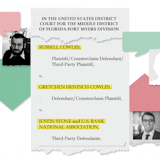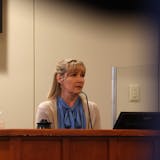There have been just over 400 tornadoes recorded in Minnesota since 2010 – four times more than during the 1950s.
But this doesn't mean tornadoes are happening more often. We're just better at spotting them, thanks to technological advances.
Still, limited record-keeping in the early years of tornado tracking means experts don't have enough information to say whether climate change is influencing the frequency or strength of tornadoes, as has been documented with other dangerous weather like hurricanes.
"With the changing climate, I think people really want to know what's going on with severe weather, what's going on with tornadoes … We've looked for trends," said Kenny Blumenfeld, senior climatologist with the Minnesota State Climatology Office. "It just looks like what we call basic variability."
This decade is on track to have the most recorded tornadoes in Minnesota since tracking began, including a deadly tornado that ripped through North Minneapolis seven years ago this month. That tornado killed one person, injured 48 others and caused long-lasting social, physical and economic damage.
The advent of Doppler radar technology in the 1990s was one of the biggest advances in tornado tracking and record-keeping, said Patrick Marsh, a warning coordination meteorologist at the National Oceanic and Atmospheric Administration (NOAA).
Improved technology means experts can anticipate tornadoes, send out warnings and watch to see if they happen, Blumenfeld said. Plus, more spotters are trained to identify tornadoes than in the mid-20th century, and the ubiquity of the camera phone means even the average citizen can document a twister.
Since 1950, there have been 1,972 tornadoes recorded in Minnesota, injuring nearly 2,000 people and killing 99.



